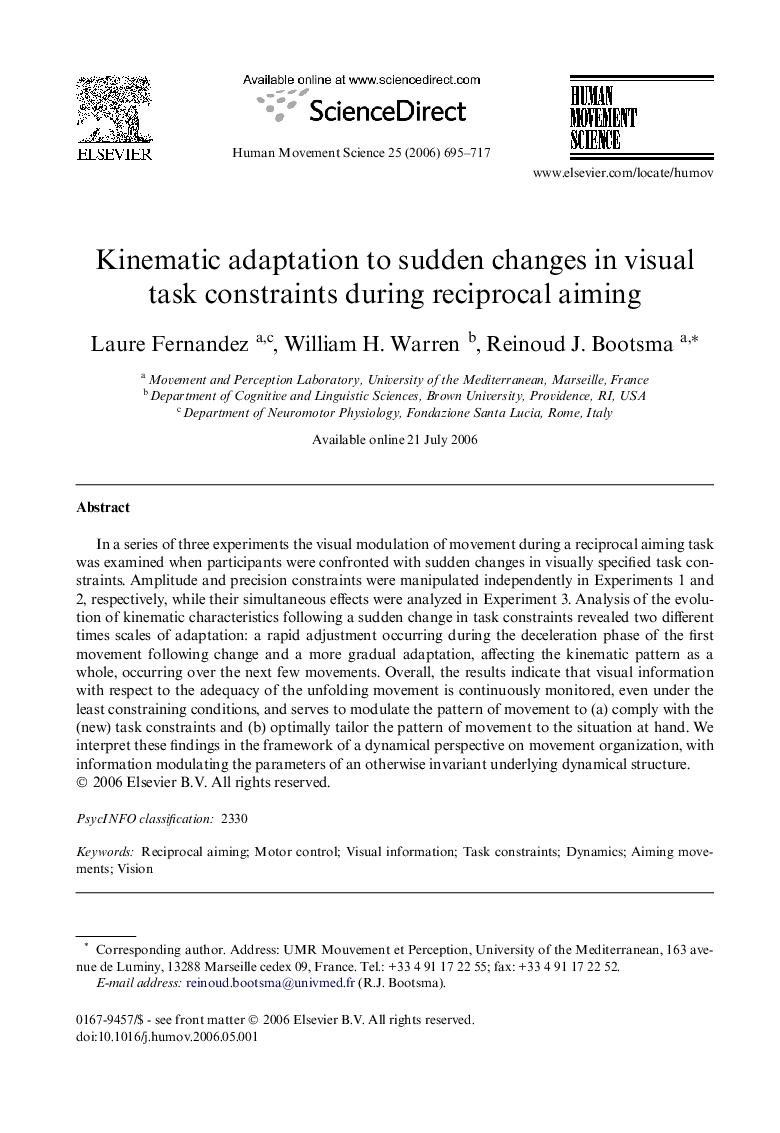| Article ID | Journal | Published Year | Pages | File Type |
|---|---|---|---|---|
| 928978 | Human Movement Science | 2006 | 23 Pages |
In a series of three experiments the visual modulation of movement during a reciprocal aiming task was examined when participants were confronted with sudden changes in visually specified task constraints. Amplitude and precision constraints were manipulated independently in Experiments 1 and 2, respectively, while their simultaneous effects were analyzed in Experiment 3. Analysis of the evolution of kinematic characteristics following a sudden change in task constraints revealed two different times scales of adaptation: a rapid adjustment occurring during the deceleration phase of the first movement following change and a more gradual adaptation, affecting the kinematic pattern as a whole, occurring over the next few movements. Overall, the results indicate that visual information with respect to the adequacy of the unfolding movement is continuously monitored, even under the least constraining conditions, and serves to modulate the pattern of movement to (a) comply with the (new) task constraints and (b) optimally tailor the pattern of movement to the situation at hand. We interpret these findings in the framework of a dynamical perspective on movement organization, with information modulating the parameters of an otherwise invariant underlying dynamical structure.
